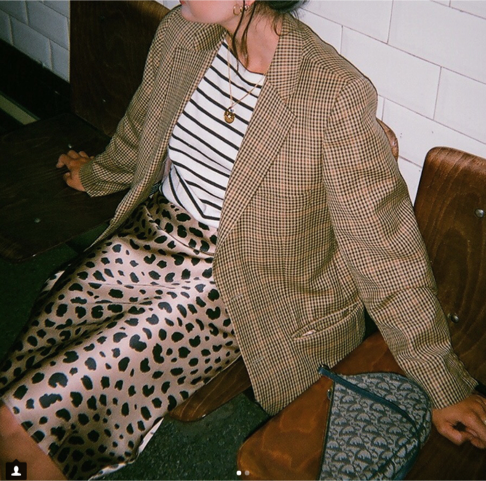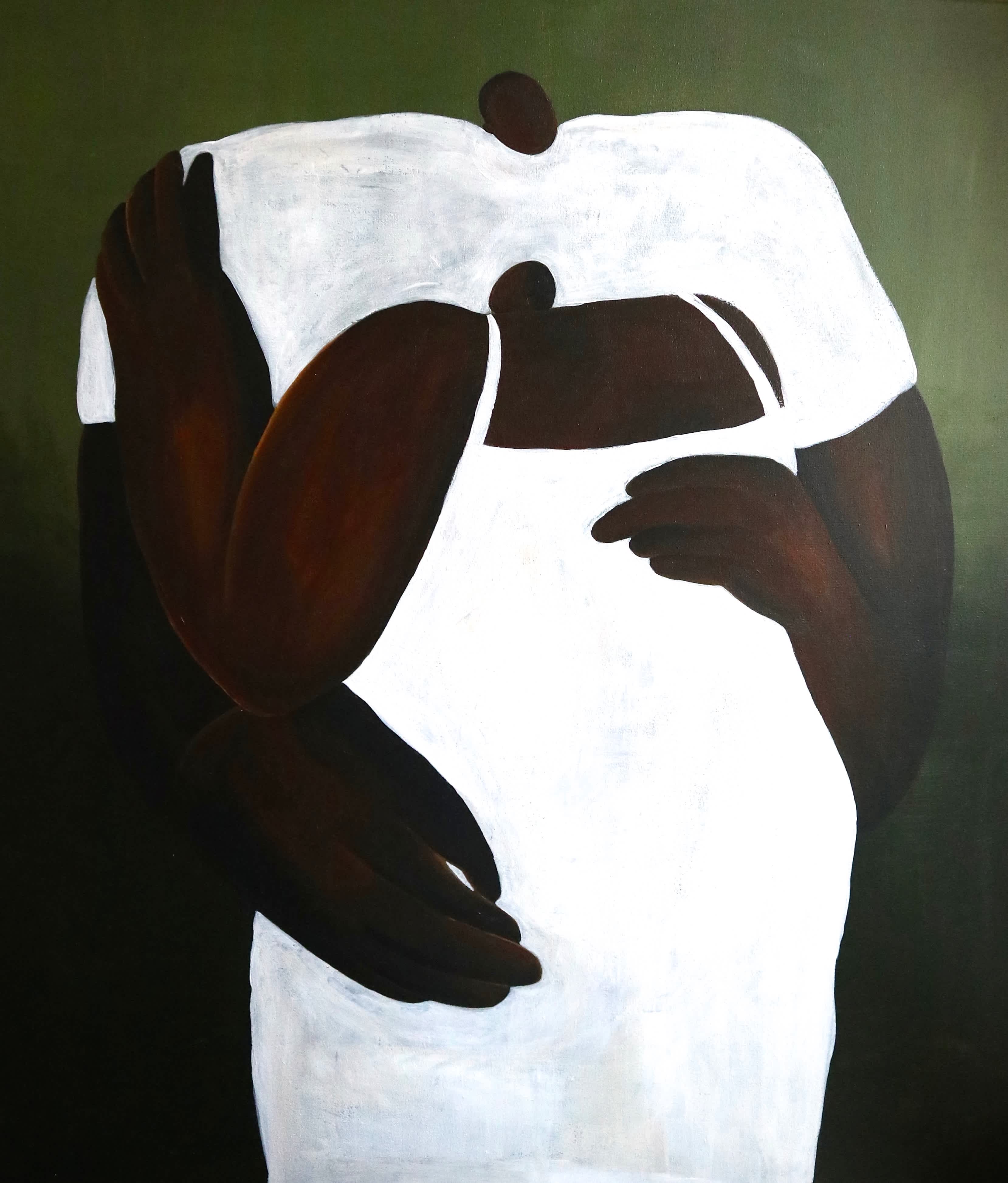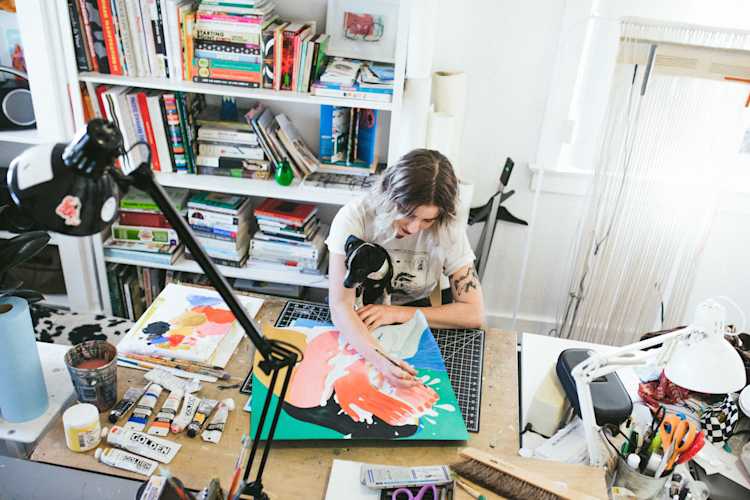
Q: What’s your story?
Celia: I grew up in Portland, and I lived there my whole life until it was time to go to college. I really loved growing up in Portland because it’s really close to nature, so I spent a lot of time outdoors and feeling connected in that way. That was really nice, but when it was time for college, I was pretty much ready to go. It’s not that big of a city, so it seemed like something bigger was something I should try out. I actually wasn’t planning on coming to LA, but I decided to go to Art Center which was there. I was pretty sure art was something I wanted to do seriously, so I came here for school and then after graduating in April, I’ve decided to stick around.
Q: Was art big in your life growing up? When did you decide you wanted to pursue it into college, and did your family support this?
Celia: Yes, so my mom was a painter when I was a kid, and she converted our garage into a studio. That was really great because I’d hang out there with her and just draw, so I was drawing pretty much since day one. I went to a middle school focused on the arts which made me really serious about it. In high school, I had other interests as well but art was the thing I felt like I could keep doing forever and be satisfied. When it came to college, my mom was super supportive, almost in a way like she could live vicariously through me. She was like, “I wanted to go to art school, you should go!”
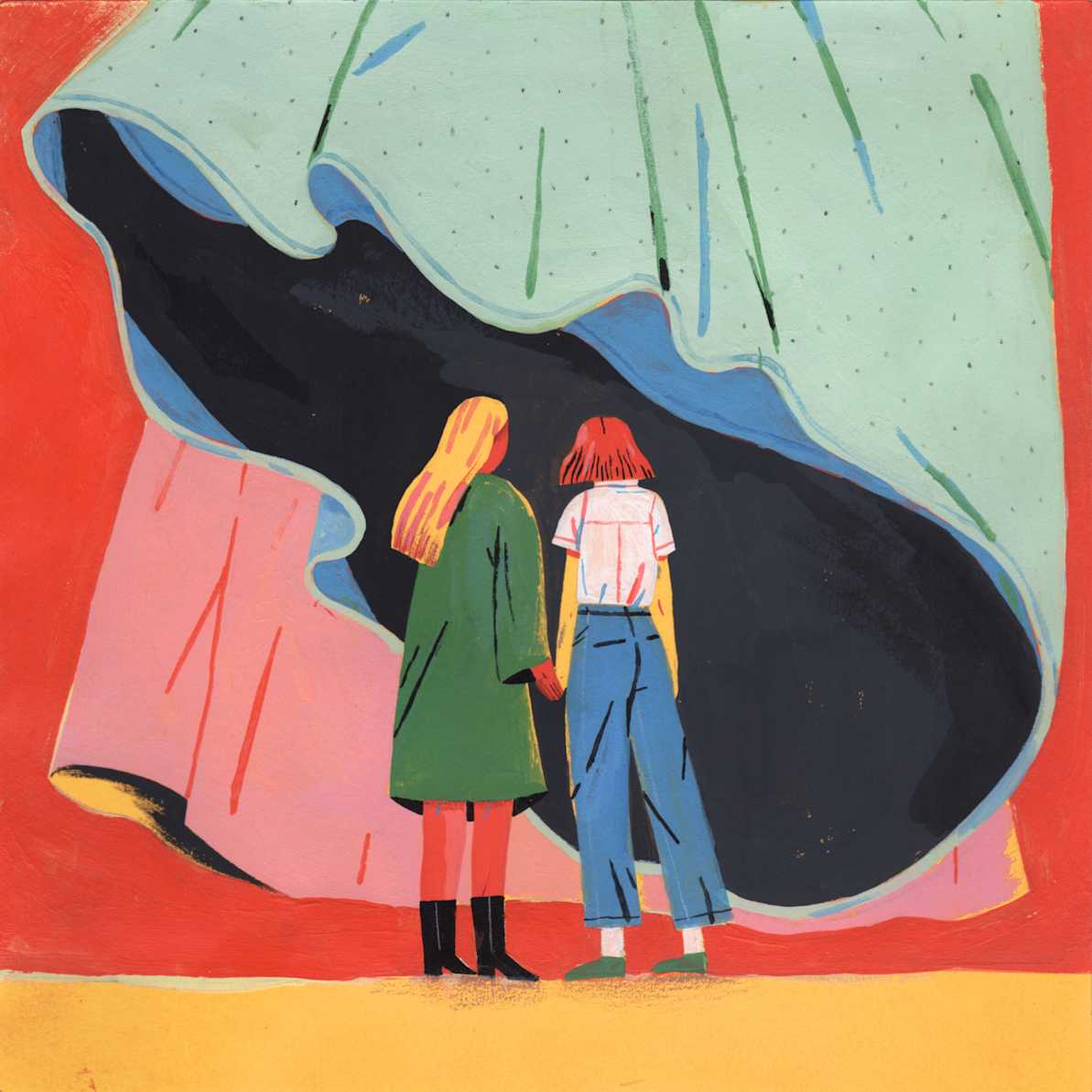
Q: What are your main mediums?
Celia: I use pretty much gouache, acrylics, and colored pencil, and then I do my work on paper. That’s pretty much it these days. I don’t really do anything digitally except for scanning and correcting the color. Maybe digital would be smarter and faster. I know people who are really good at it, but I’m just not. I don’t know, I can’t really get the result I want, so I do things pretty traditionally. I think it’s one of those things where with digital everything looks so perfect that I feel like it has to be 100% perfect, and I don’t feel like I can get that look. So, for me if it’s imperfect and sloppy, but I’m doing it with real paint, it’s okay.
Q: Did you ever consider doing anything else?
Celia: I guess I knew I wanted to do art pretty young, but also in high school, I was really into music. I played in a couple bands, and for a while I was considering pursuing music, but I feel like music has an even lower success rate than visual art (laughs). And, it also just didn’t seem to fit as well as visual art, which I felt like I could sit and do all day. Visual art wasn’t a super emotional process like music was. I mean, I’m emotionally connected to art, but I feel like I can do it as work. In middle school, I wanted to be a writer and even had some science interests, but nothing stuck as something I could spend all my time doing. And, we’ll find out if I’m wrong, you know, down the line maybe I’ll be like, “I can’t believe I thought I could draw forever,” but for now I feel like I can.
Q: How would you describe the style of your work?
Celia: This is a question I’m supposed to be good at answering, but I’m not. I think my work is very color-forward. I think color is the first thing, it’s bright. Because of that, it’s playful. I’m also really interested in texture, so it’s textured. I have abstract influences, so it’s also very flat. I’m influenced by printmaking and Japanese art. I steal a lot of my colors from either David Hockney or Japanese graphic design from the 60’s/70’s which is my big secret (laughs). No, but everything else is about textures and being sensitive to that and color.
Q: How has your artistic style changed from before college until now?
Celia: It’s definitely different. I came in doing a lot of delicate stuff that was just pencil drawings, and it didn’t jump out. I was just into the act of drawing. But, a little over halfway through I had some sort of breakdown, and I decided I wanted to make stuff that stood out. I didn’t want to just be good at drawing. I wanted to be good at making images. I wanted to be more forward and a little more dramatic. The change was also influenced by coming to LA. In Portland, everything is relatively cold all the time and it’s rainy and it’s a different mood— quieter and slower. Coming here, all the buildings are a lot more colorful. The harshness of the sunlight makes everything so sharp and high contrast, and I really liked that. I started to get influenced by it. I was like, “it’s time for a change.”
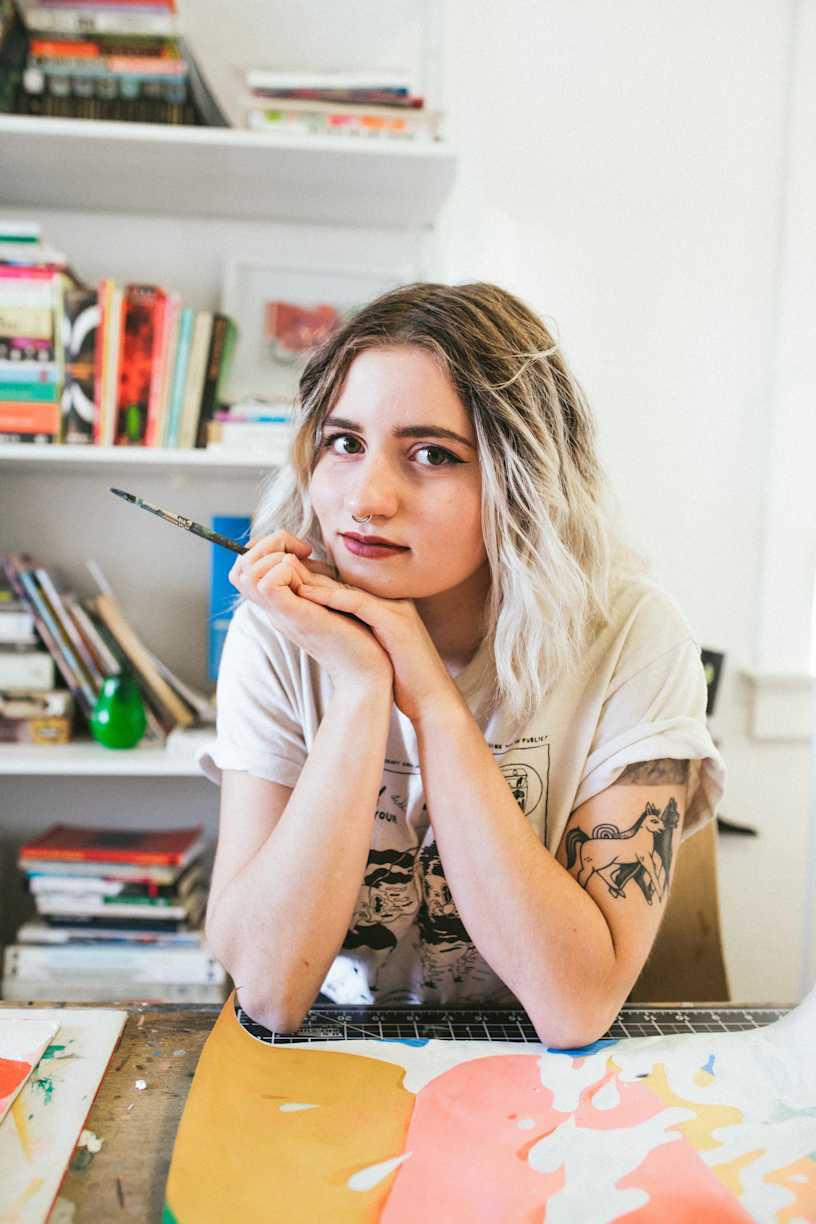
Q: You do some drawings to illustrate news stories and others for yourself— what is this balance like, and what are your main projects at the moment?
Celia: I mostly do editorial illustration work now. I’ve always liked having an assignment, so I enjoy it. I like making something that is going to go somewhere, so it has a purpose. I think I need a better balance of making work just for myself as well. I feel like it’s really valuable to do that. But, I went on this boat trip in December. It was an oceanographic expedition with graduate students and some faculty from UCSB and a couple other schools. The scientists were going out to study changes in the phytoplankton in the Santa Barbara channel. I had met the chief scientist at a research conference I worked at as a visualizer/documentarian, and so she invited me on the cruise. So, that is an on-going project right now, and then I’m also working on some art for a group show I’m doing in the spring.
Q: Where/who do you draw your inspiration from?
Celia: The Japanese prints have always interested me, and lately the graphic design/poster design from the 60’s and 70’s is really interesting, flat, and fresh. But, I also like David Hockey— he’s my favorite artist. I love him and his work. I look mostly at art from the 1920’s onwards, but I also like Matisse and Picasso, classic stuff about how you abstract a form. There are some figurative painters that I think are doing cool stuff in New York. There’s Louis Fratino and Robin Francesca Williams who I think are really cool. I love looking at figurative work because I’m interested in portraiture and things with people. It’s cool to see the different ways that people have been represented.
Q: What do you hope people take away from your art?
Celia: It sorta depends what it is—whether it’s a job or personal work. With personal work, I want people to get a sense of wonder. I like to think my work is a little bit removed from reality. Like all the figurative painting I like, it’s the world but just slightly different. It’s not anybody else’s world— it’s mine and ours— but it’s just looking at it in a different way which I really like. Magical realism is something I love. Like in books, for example, there’s something fantastical in it but it’s never explained, it’s just accepted as a part of the world.
With illustration for a job, I wanted to make information and ideas accessible. Of course, a lot of that is the good work of the authors I get to illustrate for, but I want people to see something and feel welcome in it and interested in it. I think that I’m lucky where a lot of the articles I get are really important ideas, and I just want there to be a little bit of fun or playfulness to bring people in so that they then look at the good ideas and care about it. Hopefully, I’ve been able to give it a human touch, and then they see the article which is really a human touch. I just want to be of service in that way.
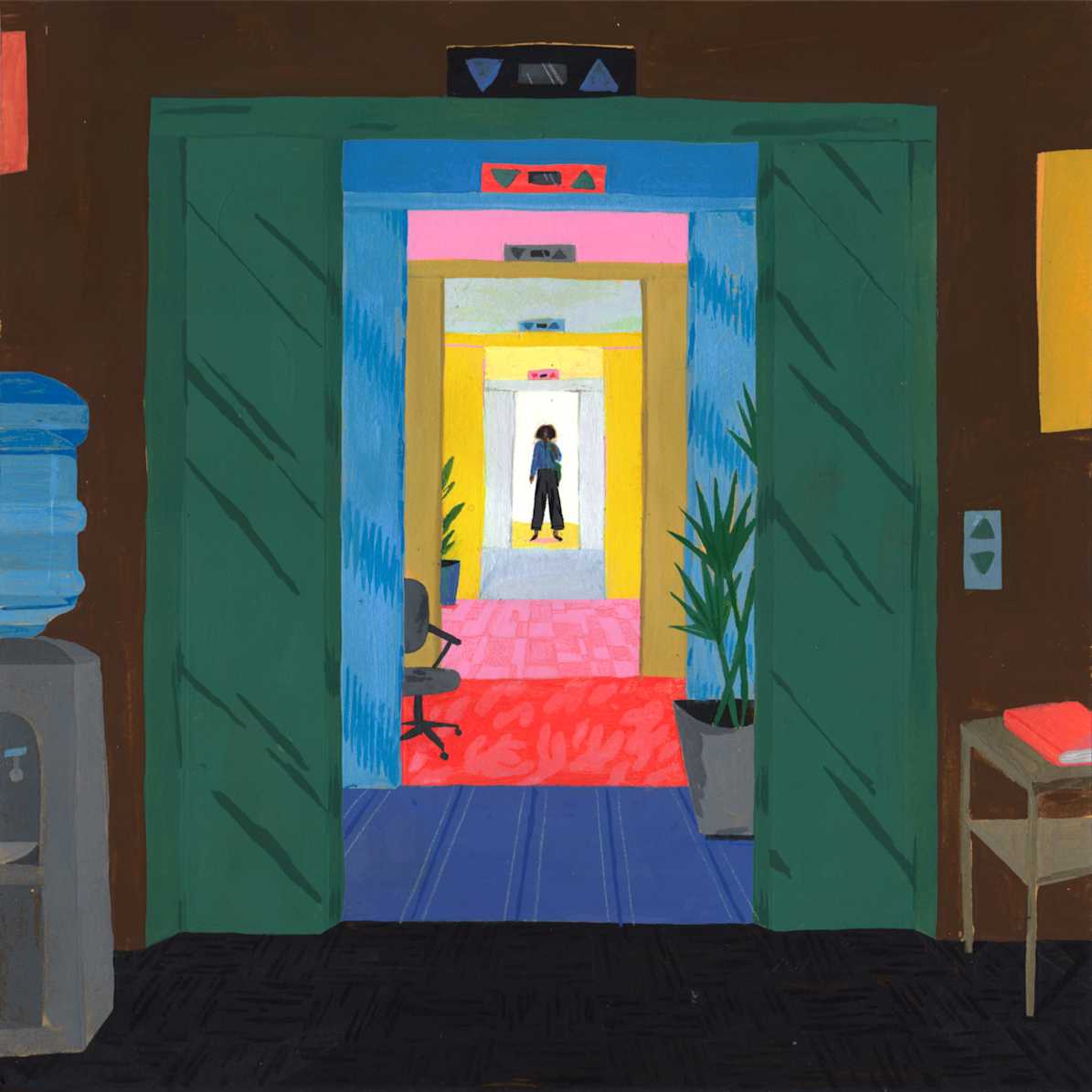
Q: In 5-10 years, what kind of progress do you hope to see in your art?
Celia: When I graduated from school, they made us do this PowerPoint of where our lives will go. It’s super funny to give a PowerPoint of my future life in bullet points. I think my answers have changed since then, but I do want to keep doing illustration. I really like helping and being a part of something. I’d like to do more of that than I am now even. Sometimes, I want to move more towards fine art and gallery work and painting my own ideas, and other times that’s totally scary and unappealing. I think lately I want to have a role in communicating science to the public. From talking with the scientists involved in the phytoplankton research, they feel that science has a communication issue. I agree in that a lot of times science is presented in a way that’s either super intimidating or even boring. But, I feel like there are a lot of really beautiful and abstract things in science that connect with our lives, and it doesn’t have to be scary or serious all the time. It should be allowed to be funny even sometimes. Illustration is about communicating, and so being able to help in that way would be really cool.
Q: Musicians or authors that represent you?
Celia: Just because I mentioned magical realism earlier, I’ll go with that. Ever since reading his work, I’ve loved Gabriel Garcia Marquez. He’s a Colombian author who wrote about magical realism. I love his stuff because it’s all about the relationships between people and their lives. It’s not that their lives are that special but there’s magic in it, like literal magic, and it’s never explained which I really love. So, that would be for books.
Music is harder because I go through a lot of moods. The other day I was thinking about this and trying to think of something that would be interesting, and cool, and edgy but relatable which is a really stupid thing to think that I’m capable of. I listen to a lot of folky stuff/blues stuff. I’m very sensitive, and I love Sufjan Stevens, but at the same time I was in a punk band in high school, so I like to go in that direction too.
